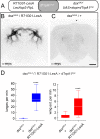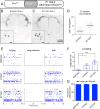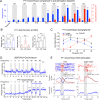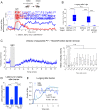P1 interneurons promote a persistent internal state that enhances inter-male aggression in Drosophila
- PMID: 26714106
- PMCID: PMC4749567
- DOI: 10.7554/eLife.11346
P1 interneurons promote a persistent internal state that enhances inter-male aggression in Drosophila
Abstract
How brains are hardwired to produce aggressive behavior, and how aggression circuits are related to those that mediate courtship, is not well understood. A large-scale screen for aggression-promoting neurons in Drosophila identified several independent hits that enhanced both inter-male aggression and courtship. Genetic intersections revealed that 8-10 P1 interneurons, previously thought to exclusively control male courtship, were sufficient to promote fighting. Optogenetic experiments indicated that P1 activation could promote aggression at a threshold below that required for wing extension. P1 activation in the absence of wing extension triggered persistent aggression via an internal state that could endure for minutes. High-frequency P1 activation promoted wing extension and suppressed aggression during photostimulation, whereas aggression resumed and wing extension was inhibited following photostimulation offset. Thus, P1 neuron activation promotes a latent, internal state that facilitates aggression and courtship, and controls the overt expression of these social behaviors in a threshold-dependent, inverse manner.
Keywords: d. melanogaster; aggression; courtship; fruitless; internal state; neuroscience; persistence; social behavior.
Conflict of interest statement
The authors declare that no competing interests exist.
Figures














References
MeSH terms
Grants and funding
LinkOut - more resources
Full Text Sources
Molecular Biology Databases

